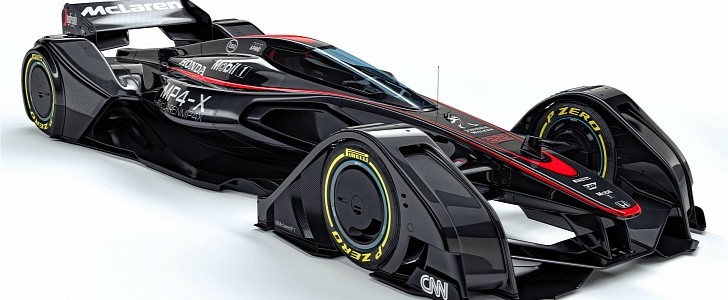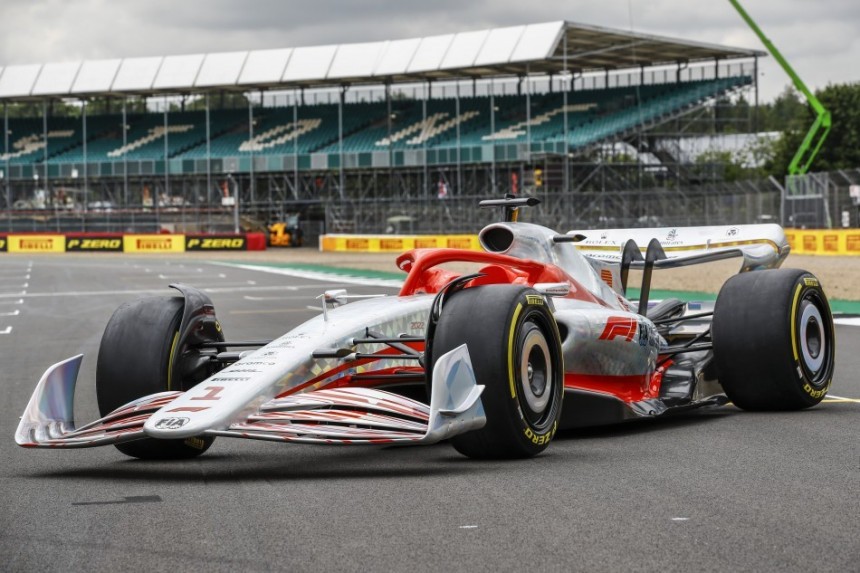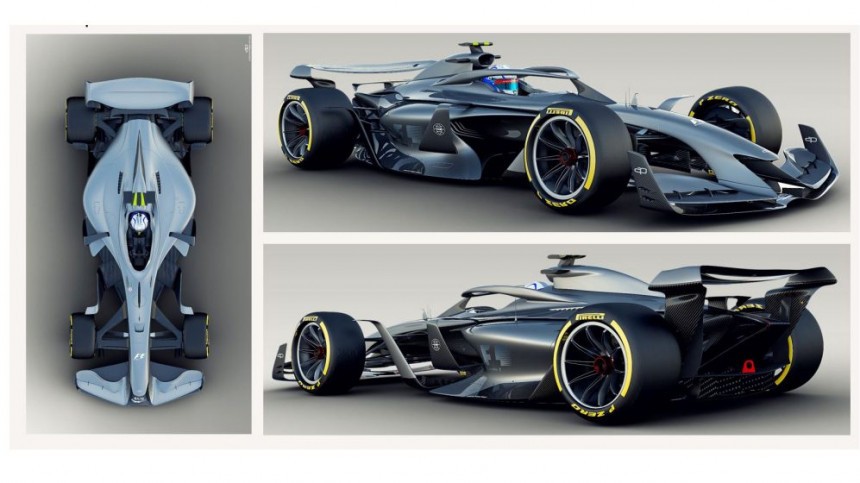Even though Formula One just got through a significant regulation change, that hasn't stopped the FIA (Fédération Internationale de l'Automobile) from thinking about introducing a new rule. Discussions had been held for quite some time, attracting manufacturers like Audi and Porsche, but now they appear to be finalized.
The rules about powertrains were more or less decided (the main reason why the world of F1 attracted Audi and Porsche). Still, the rules about the chassis and the essential aerodynamics aspects are a black hole. Folowing the new ground effect "New Era" cars of 2022, the F1 officials attended a meeting laying out "preliminary targets" for the 2026 chassis rules.
These targets are based on some simulation work led by the FIA's aerodynamic departments. They were made to improve the quality of racing and bring more exciting moments for motorsport fans.
For now, these are just some ideas, and we have no clue on how the FIA will achieve this, but at least we have a clear picture of what to expect from Formula One's next "revolution."
The first target we are going to talk about is the reduced drag. The significantly lower drag will improve sustainability and efficiency while complementing the power unit characteristics. As a result, it is one of the most important targets that the FIA will hope to achieve.
In addition, reduced drag will make the F1 cars more fuel efficient with no loss in horsepower, meaning teams could use powertrains that are more reliant on hybrid systems and utilize sustainable fuels.
In 2022, FIA improved the ability to follow the car in front without losing so much traction. By the default laws of physics, there will always be some phenomenon that will affect the vehicles. Still, this effect could be reduced drastically by manipulating weight distribution and making the cars less sensitive from an aerodynamic standpoint. The methodology seems to be good if we look at what happened in the four Grand Prix held in 2022.
Another big ambition for the Fédération Internationale de l'Automobile will be the introduction of more compact and lighter cars. The size and weight of F1 cars were heavily criticized because of the constant growth in the past decade. The minimum weight increased by no less than 31% when comparing the "New Era" cars with the 2009 cars. In 2022, the F1 single-seaters have a weight of 798 kilograms (1759.2 lbs), increasing by 46 kilograms (101.4 lbs) from last season.
However, this growth in weight and size was influenced by the newly introduced hybrid engine, the addition of the Halo safety device, 18-inch wheels, and so on. Another wish is to continue the path toward the standardization or simplification of strategically-selected components for cost-cutting purposes. At the same time, the expansion of the usage of sustainable materials and focus on recyclability are other crucial targets for the FIA.
By 2030, F1 desires to be net carbon zero, while from the following year, the FIA officials have approved the use of only 11 slick tire sets instead of 13. With the team themselves committed to various environmental targets and set to build their value as profitable organizations, everyone will insist on this.
For decades, FIA has wanted to improve the safety of Formula One in any possible way. Without a doubt, safety improvements are a target for the 2026 change of regulation. However, they said something about an active and connected safety system, which is very interesting. We think about the multitude of sensors implemented in road cars to avoid possible incidents when we say active safety. To see some emergency braking system or some laser or radar sensors that warn F1 drivers could be life-saving.
It's a long road until 2026, and until then, we will keep you updated with all the pieces of information released by FIA.
These targets are based on some simulation work led by the FIA's aerodynamic departments. They were made to improve the quality of racing and bring more exciting moments for motorsport fans.
For now, these are just some ideas, and we have no clue on how the FIA will achieve this, but at least we have a clear picture of what to expect from Formula One's next "revolution."
The first target we are going to talk about is the reduced drag. The significantly lower drag will improve sustainability and efficiency while complementing the power unit characteristics. As a result, it is one of the most important targets that the FIA will hope to achieve.
In 2022, FIA improved the ability to follow the car in front without losing so much traction. By the default laws of physics, there will always be some phenomenon that will affect the vehicles. Still, this effect could be reduced drastically by manipulating weight distribution and making the cars less sensitive from an aerodynamic standpoint. The methodology seems to be good if we look at what happened in the four Grand Prix held in 2022.
Another big ambition for the Fédération Internationale de l'Automobile will be the introduction of more compact and lighter cars. The size and weight of F1 cars were heavily criticized because of the constant growth in the past decade. The minimum weight increased by no less than 31% when comparing the "New Era" cars with the 2009 cars. In 2022, the F1 single-seaters have a weight of 798 kilograms (1759.2 lbs), increasing by 46 kilograms (101.4 lbs) from last season.
However, this growth in weight and size was influenced by the newly introduced hybrid engine, the addition of the Halo safety device, 18-inch wheels, and so on. Another wish is to continue the path toward the standardization or simplification of strategically-selected components for cost-cutting purposes. At the same time, the expansion of the usage of sustainable materials and focus on recyclability are other crucial targets for the FIA.
For decades, FIA has wanted to improve the safety of Formula One in any possible way. Without a doubt, safety improvements are a target for the 2026 change of regulation. However, they said something about an active and connected safety system, which is very interesting. We think about the multitude of sensors implemented in road cars to avoid possible incidents when we say active safety. To see some emergency braking system or some laser or radar sensors that warn F1 drivers could be life-saving.
It's a long road until 2026, and until then, we will keep you updated with all the pieces of information released by FIA.











